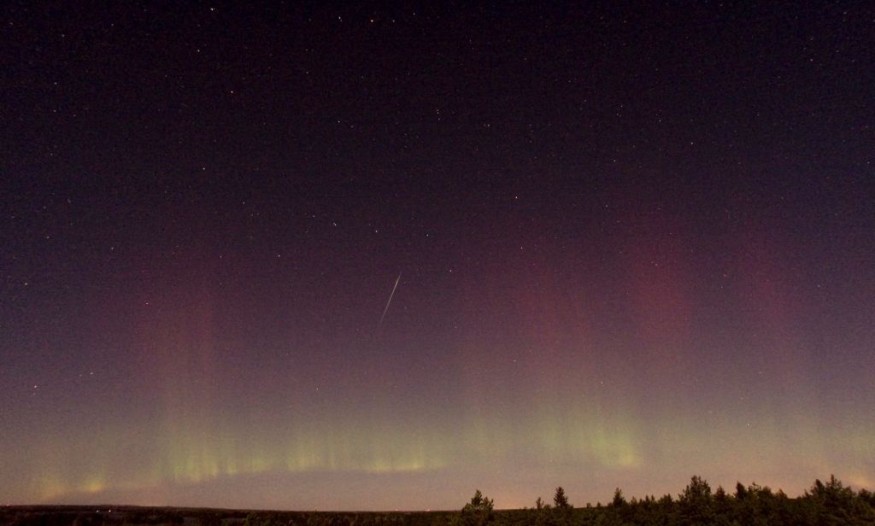
Skywatchers are in for a treat as the annual Draconid meteor shower is set to peak on the evening of Oct. 8 and 9.
Observers can expect to see "shooting stars" light up the night sky, even though this meteor shower is not considered one of the most spectacular of the year.
Draconid Meteor Shower: When to Watch and What to Look For
The Draconid meteor shower is unique because, unlike most meteor showers that are best watched in the early morning, the Draconids can be seen anytime after dark. This makes it easier for people of all ages to enjoy.
The Draconids come from the constellation Draco, often called the Dragon, which can be seen in the northern sky. This group of stars is one of the largest and easiest to seen in the Northern Hemisphere and can be spotted when the sky is clear.
It has a "Z" shape that appears above the Big Dipper in the north-northwest sky. Draco is a circumpolar constellation, which means it moves around the North Star every 24 hours, making it visible most of the year.
During the Draconid meteor shower, meteors appear to come from this constellation, which is why the shower is named after it.
The American Meteor Society describes the Draconids as a variable meteor shower, meaning the number of meteors seen can change. Normally, observers can expect about ten meteors per hour during the peak.
However, there is always a small chance of seeing more meteors, which adds excitement for viewers. According to EarthSky.org, the best time to watch the Draconids this year will be on the evening of Oct. 8. There will be very little light from the moon, which is just a small crescent, and Venus will also be visible in the western sky after sunset. These conditions will make it easier to see the meteors.
A Closer Look at the Draconid Meteor Shower
Meteor showers like the Draconids happen when Earth passes through trails of rocky particles left behind by comets. The Draconids come from Comet 21P/Giacobini-Zinner. This comet orbits the sun about every 6.5 years, leaving a trail of particles as it travels, as reported by NASA.
When Earth crosses this path, the particles hit our atmosphere and burn up, creating bright streaks of light called meteors. The Draconid meteors move slower than those from other showers, traveling through our atmosphere at about 40,000 miles per hour.
For the best view, find a dark place away from city lights and look toward the northern sky, where Draco can be seen. Give your eyes a few minutes to adjust to the darkness. It's best to lie down or sit back so you can look up to the sky comfortably. You don't need binoculars or a telescope to see the meteors; just use your eyes, as meteors move quickly across the sky.
Draco itself has some interesting deep-sky objects. These are things like the Cat's Eye Nebula, the Tadpole Galaxy and the Spindle Galaxy. While these objects are too faint to be seen without a telescope, they add to the interest of this constellation.
The Cat's Eye Nebula, also known as NGC 6543, is a colorful cloud of gas, while the Tadpole Galaxy (UGC 10214) and the Spindle Galaxy (M102) are faraway galaxies that can be observed with a telescope, according to Constellation-Guide.com.
© 2025 ScienceTimes.com All rights reserved. Do not reproduce without permission. The window to the world of Science Times.












